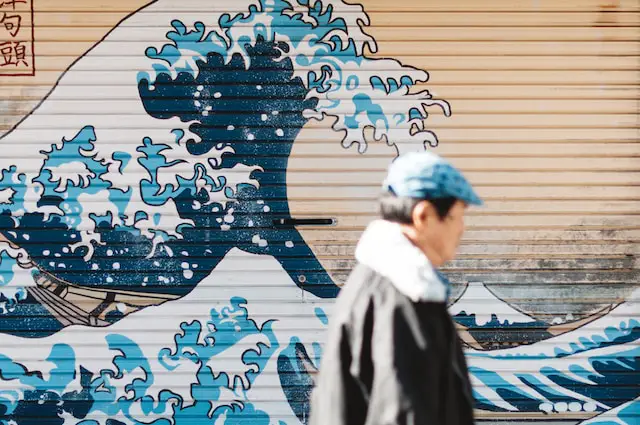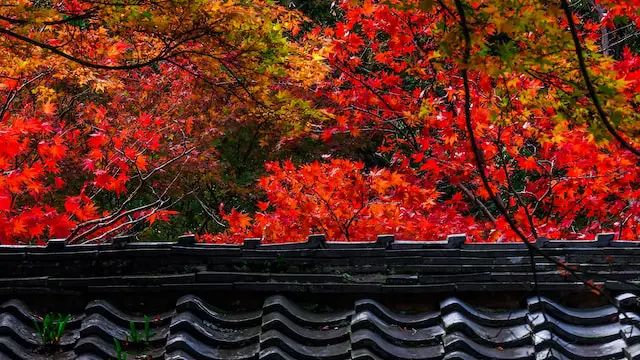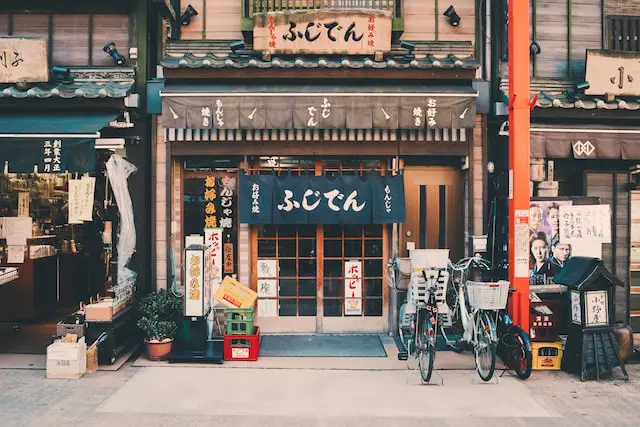Welcome, art enthusiasts, history buffs and intrepid travelers, to an enchanting exploration of Japanese art and craftsmanship. Japan, the land of the rising sun, has a rich and timeless artistic heritage that remains alive and well in traditional workshops and studios across the country.
In these hallowed creative spaces, one encounters the meticulous precision and sublime beauty of Japanese craftsmanship. From spirited artistry to functional elegance, the work produced here hints at centuries of cultural refinement, marrying minimalist aesthetic sensibilities with inventive technique. This voyage promises to immerate you in the world of Japanese Art and traditional workshops in Japan, as we shed light on the intricate process behind the masterpieces born within these Japanese studios.
Get ready to unmask the marvels of Japanese artistic tradition that will leave you captivated with its splendid beauty and timeless elegance.
The History and Context of Japanese Craftsmanship
Welcome to a journey through time, as we delve into the vibrant and intricate world of Japanese craftsmanship. An essential element of Japan’s cultural plurality, it is a bridge that harmoniously connects the past with the present.
The seeds of craftsmanship were sowed during the Yayoi period (300 BC-300 AD), a key era in the history of Japanese craftsmanship. It is during this period that pottery and metalwork marked their inception. Fast forward to the Edo era (1603-1868), and these nascent crafts had evolved into intricate art forms, morphing everyday utility items like ceramics, textiles, and lacquerware into objects of ethereal beauty.
In the traditional Japanese way of thinking, there is a strong connection between nature, the seasons, and the concept of aesthetics. This is reflected in every object created with meticulous care and precision. Whether it be a delicately folded origami or precise hand-painted patterns on ceramics, Japanese art isn’t simply about creating a product but is a testament to the endeavor of achieving perfection and perpetuating age-old traditions.
Japanese studios and artisanal workshops across the country dedicate their efforts to preserve this age-old lineage, combining traditional techniques with modern interpretations. This perfect balance of old and new resonates with the Japanese philosophy of Iki, signifying sophistication, originality, and simplicity, a concept that remains at the heart of the continuum of Japanese Art over the centuries.
No matter where your journey takes you in Japan, the echo of traditional workshops is impossible to miss. So, immerse yourself to resonate with this unbroken rhythm and harmony steeped in history, and gain a truly authentic experience of the Land of the Rising Sun.
Exploring Kintsugi: The Art of Golden Repair
Welcome to the world of Kintsugi, a emblematic element of Japanese art and an epitome of the term wabi-sabi, embracing the beauty of the broken. In Japan, the art of golden repair is perceived as not just a simple mending technique, but as a philosophical statement.
Having its roots deeply ingrained in the 15th century, Kintsugi or “Art of Golden Repair”, is a traditional Japanese art technique using lacquer mixed with gold, silver or platinum to mend broken ceramics. Rather than hiding the cracks, each trauma is highlighted, telling a story, adding beauty and value to the recycled piece.
The intriguing aspect of Kintsugi is the narrative it projects. It illustrates the Japanese ethos of ‘Mono No Aware’ – an appreciation of the transient beauty of the worldly existence. Considered as an emblem of resilience, strength, and second life, Kintsugi stands as a robust pillar in the annals of Japanese artistry.
For travelers interested in experiencing this intimate process, there are numerous Kintsugi workshops scattered across Japan. In Kyoto, Kuge Crafts is one place offering insightful workshops. Tokyo dwellers are also in luck! Several studios, such as Gen Saratani, present fascinating classes, handy for both locals and tourists.
Experience the art of Kintsugi and immerse yourself in the wonderful philosophy it embodies. The journey of understanding and appreciating Kintsugi truly adds depth to the exploration of Japanese craftsmanship.
The Delicate World of Origami and Kirigami
For many, the exploration of Japanese art begins with the delicate folds of Origami and the intricate cuts of Kirigami. These traditional art forms, steeped in centuries of cultural heritage, represent the gentleness and precision inherent in Japanese craftsmanship.
Origami, derived from oru meaning to fold, and kami, meaning paper, is an art form that transforms a simple sheet of paper into a complex sculpture through careful folding. No cuts or glue, just pure hands-on creativity. On the other hand, Kirigami adds another element to this paper artistry – the art of cutting paper. The word Kirigami is from kiru meaning to cut and kami, again meaning paper. The precise incisions and folds create delicate designs and three-dimensional forms bustling with life.
Experience these arts first-hand through various Origami workshops and Kirigami studios in Japan. Renowned spots include the Origami Kaikan in Tokyo where you can both watch artisans at work and participate in workshops. There is also the renowned Narabigaoka’s Kirigami Studio in Aichi, known for hosting classes to introduce visitors to the captivating world of Kirigami.
Whether you’re fascinated by the delicate precision of this traditional paper art or simply seeking a unique souvenir to take home, the world of Origami and Kirigami is sure to leave you engrossed in the mesmerizing folds and cuts of Japanese artistry.
The Meticulous Realm of Japanese Pottery
Welcome to the time-honored world of Japanese Pottery. Japan’s rich and diverse clay composition has inspired a meticulous approach to pottery echoed in every region, each boasting its unique style and technique. This historical and culturally significant art form is something every traveler should explore.
Japanese pottery is known for its form and function amalgamation, presenting the endearing ethos of the Japanese, where aesthetic and practical breath as one. A beautiful piece of pottery serves not just as a visual treat, but also a truly utilitarian object.
The town of Arita-cho in Saga prefecture is widely considered the cradle of porcelain manufacturing in Japan since the 17th century. Known for its characteristic blue and white ceramics painted with intricate patterns, it’s a place where you can observe skilled artisans at work and even participate in pottery-making experiences.
Another pottery hotspot is Mashiko town in Tochigi prefecture. Known for standardizing the “Mingei” folk art movement led by Shoji Hamada, this town offers a view into the earthy, rustic side of Japanese pottery.
Each pottery studio seems to be a universe in itself, where years of experience and tradition are kneaded into every piece. It’s fascinating to see how the unsophisticated lump of clay transforms into something soulful under the craftsman’s hands. It’s an enchanting journey you would not want to miss during your travels through Japan.
So, make it a point to visit these age-old pottery towns and studios in Japan, for an immersive and tangible connection to the country’s artistic heritage.
Encountering the Unique Craft of Wagashi Making
Dive into the enchanting world of Wagashi Making, an integral part of the panorama of Japanese Craftsmanship. Wagashi is the term given to traditional Japanese sweets, an art form that is not only visually captivating, but also an integral part of the country’s cultural heritage.
These sweets are typically designed to reflect the changing seasons, and the intention is to delight all of the senses. The art of Wagashi represents the epitome of Japanese aesthetics, with each piece representing a miniature work of art.
Most tourists wouldn’t think to embark on a Wagashi culinary adventure, but learning to make these traditional sweets is actually quite a rewarding experience. In Wagashi workshops, you not only learn the techniques but also the underlying philosophy and symbolism in every Wagashi piece, aspiring a newfound appreciation for these edible masterpieces.
Well-established workshops, such as Toraya and Kanshundo, offer short Wagashi courses, suitable for both beginners and experienced enthusiasts. Notably, these workshops are widespread across Japan and can be easily found in regions including Kyoto, Tokyo, and Osaka. Some even offer English instruction, making them accessible to all.
So next time you visit Japan, take a break from typical tourist routines. Instead, immerse yourself in the harmonious intersection of taste, texture, and aesthetics that is Wagashi making. It’s a sure way to create unforgettable memories and bring home a piece of Japan you can recreate yourself.
Delve into the hallowed realm of Wagashi, a design marvel that truly exemplifies the finesse and delicacy of Japanese Craftsmanship.
Shedding Light on Japanese Textile Art and Indigo Dyeing
In the world of Japanese Art, textile art forms hold a significant place. They are a demonstration of the sublime, meticulous, and time-honored processes that Japanese Craftsmanship is famous for. Among these art forms, Indigo Dyeing, with its deeply embedded cultural and historical roots, stands out.
Indigo dyeing, also known as Aizome, is a traditional coloring process that uses natural indigo to create stunning shades of blue. Every piece crafted is a manifestation of the artist’s skill and patience. This art form has been fundamental in shaping the unique aesthetic of Japanese Textile Art, giving the world a precious glimpse into the soul of Japanese tradition.
Visitors endeavoring to uncover this traditional art form can find a plethora of indigo dye workshops scattered across Japan. These “Indigo Dye Workshops” allow curious minds to explore the very essence of aizuome, experience the painstaking process, and appreciate the artistry involved in creating the vivid blue hues. Encouraging hands-on experience, these workshops are places where you can feel, practice, and spread the love for this exquisite art form.
A trip to Japan is incomplete without witnessing this incredible frame of its artistry. So, when planning your Japanese journey, make sure to set foot into the turbulent and blued waters of aizome and bask in the brilliance of age-old Japanese craftsmanship.
Conclusion
The world of Japanese art and craftsmanship is filled with a deep sense of history, culture, and beauty. It is a realm where simplicity meets sophistication, and fragility holds strength. As you have journeyed with us through this exploration of diverse traditional crafts and ancient art forms, we hope you have been inspired and touched by the exquisite beauty that these practices hold.
Taking part in the traditional workshops in Japan is absolutely more than just an artistic experience; it is an immersion into the country’s rich culture and ethos. It’s stepping into a Japanese studio, getting your hands into clay or folded paper, and feeling the tranquility that comes with creating something beautiful makes the journey worthwhile.
As you wander through the pottery towns, uncover the quaint studios, participate in Japanese sweets making workshops, or perhaps try your hand at the delicate art of indigo dyeing, you immerse yourself in an art form that has been part of Japan’s cultural fabric for centuries. These experiences provide a resonance that transcends the physical aspect, creating a deeper connection with the country and its customs.
Each craft tells a story of Japanese resilience, creativity, and commitment to detail, granting us the chance to catch a glimpse of Japan’s soul through its artistry. Opportunities to touch, feel, create, and appreciate these art forms first-hand are rare experiences not to be missed.
We invite you — art enthusiasts, curious wanderers, and cultural explorers alike — to step out of the written page and experience these profound Japanese traditional crafts for yourself. Revel in the magic of Japanese art, and allow your own hands to tell a part of Japan’s enduring story. Your journey through Japanese art begins here.




